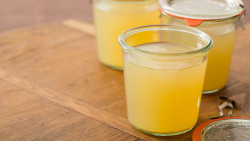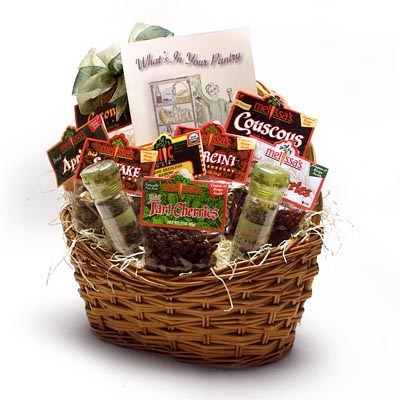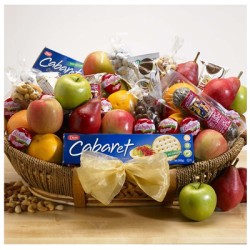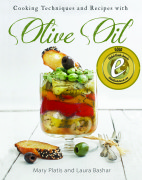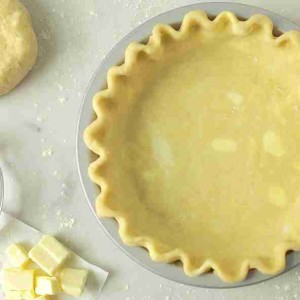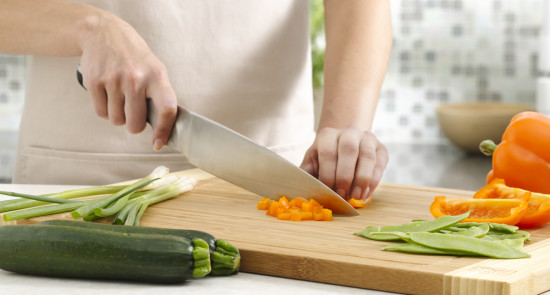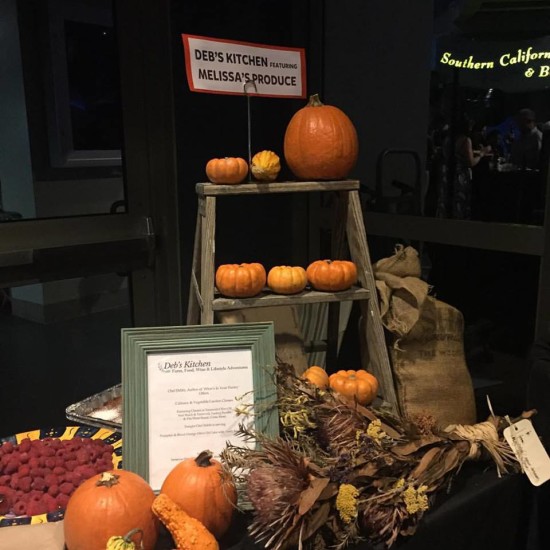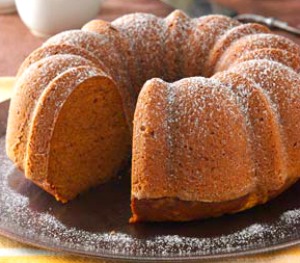Christina Peters, The Food Shooter, and I decided we needed to make a second video using the Perfect Stock recipe and this is what we offer you today. You will have Perfect Gravy for your holiday, just follow our simple tips!
Category Archives: Blog
Bone Broth or Stock
There is very little difference between bone broth and stock, actually it’s just the addition of a good apple cider vinegar like Bragg. The terms broth and stock are confusing as they seem to be used interchangeably for one another. Broth is usually made from the meat where stock is made with bones. Stock is a little hardier and more flavorful, both enhance any dish you use them in or if you just heat and eat as a soup. They keep well for 3 days refrigerated, you can re-heat the stock and keep for another 3 days or freeze for up to 6 months. I like to freeze in 1/2 cup portions so I can use the stock to make rice instead of using water. Vegetables simmered in stock is also a great way to get extra flavor. When making stock be sure not to add salt until it is all finished, the stock will reduce as it cooks and if you salt it initially it will become over salted.
Here’s a quick little video that Christina Peters & I made
The Food Shooter and The Chef
Holiday Gift Giving
Here are some of my favorite gifts for anyone!
….’If you want to learn about food…COOK…and Chef Debbi has created a guideline that taps into the practical and encourages the intuitive cook inside us all!’
Helene Kennan, Former Getty Ex. Chef
My specially designed gift basket, hand picked ‘Pantry Items’ from the best, Melissa’s produce. Included is a copy of my ‘What’s In Your Pantry’ book guiding you through the basics of stocking your kitchen from knives and cookware to seasonal recipes. And an exceptional selection of dried herbs, mushrooms, spices and more from Melissa’s Produce. Give the experts at Melissa’s a call for your special delivery! 800-588-0151
A sampling of other tasty gift baskets from our friends at Melissa’s!
Braised Short Ribs
Easy Braised Short Ribs
Braising a tough cut of meat over a long period of time makes the meat deep, rich and delicious. With a small amount of preparation and a long cooking time these are easy to make and warms you up on those cold winter days. Make extra! You’ll want them for leftovers, you can make a ragu out of them, a pot pie or even a Shepherds pie for quick weeknight dinners. You’ll get more flavor out of the short ribs if they are on the bone, they will fall right off the bone after their long slow cooking so they’ll be easy to remove.
Serves 4
- Olive oil
- 1/3 cup flour (or more as needed)
- 2 teaspoons sea salt
- 1 teaspoon ground pepper
- 4 pounds short ribs on the bone
- 1 brown onion, chopped
- 1 medium carrot, roughly chopped
- 2 stalks celery, roughly chopped
- 1 tablespoon tomato paste (double concentrate from a tube-found in the ‘Italian’ section
- 2 tablespoons flour
- ¼ cup dry red wine
- 1 qt. beef stock, may use chicken stock
- 1 bouquet garni (1 bay leaf, 1 sprig thyme, 2 sprigs Italian parsley tied together in cheesecloth
Heat oven to 350°.
Mix flour, salt and pepper together in a shallow bowl or on a plate.
Heat a large Dutch oven over medium high heat; add enough oil to coat the bottom of the pan.
Dry short ribs well and dredge in the flour mixture, shake off the excess and place the meaty side into the hot oil. Do not crowd the meat in the pan or it will not brown properly. This is the most important step in braising so take your time. Remove the ribs, set aside and continue until all ribs are browned.
In the same pan, add more oil as necessary, add onions, carrots, celery to the pan and sauté until lightly browned.
Add tomato paste and stir to coat all the vegetables and cook the paste a little, about 2 minutes.
Add flour and stirring constantly cook for another 5 minutes without burning. The flour may turn a little dark but that’s fine.
Add the dry red wine to the pan and scrape the bits that have stuck to the bottom of the pan. Let reduce and thicken slightly. Remove from the heat.
Return the ribs to the pan, cover with stock and add the bouquet garni. Put the lid on the Dutch oven and bake for 3 hours. Remove bouquet garni.
Juices may be thickened into gravy with a beurre maníe, roux or cornstarch slurry.
Beurre Manie, Roux, Cornstarch Slurry
Beurre Manie
Mix together equal parts softened butter and flour until it looks like thick butter and all the flour is incorporated.
Roux
Melt 2 Tb. butter in a pan, add 2 Tb. flour, whisk together and cook until lightly browned
Cornstarch Slurry
2 parts cold water mixed with 1 part cornstarch
Whisk any of these into your hot liquid, stirring until thickened. Don't over-cook the cornstarch slurry or it will start to break down and become thin again.
Chestnut-Apple Dressing
Love the taste of chestnuts in your dressing? It’s easy with Peeled & Steamed Chestnuts! I find them at Gelsons, Bristol Farms, Lazy Acres or you can order them direct from Melissas. Here’s my favorite recipe…
Chestnut-Apple Dressing
- 1 loaf artisan bread -- cut into cubes, toasted until lightly browned
- 1 box cornbread mix -- baked and cut into pieces (Trader Joes has an excellent brand)
- 1 onion -- diced
- 4 ribs celery -- diced
- 3 tablespoons minced fresh sage leaves
- 2 tablespoons minced fresh thyme leaves
- 1 stick unsalted butter -- (1/2 cup)
- 1 pound fresh chestnuts -- shelled and peeled, chopped coarse, or 1pkg. vacuum-packed whole chestnuts, chopped
- 2 small apples (organic) -- golden delicious, cut into 1" pieces with skin
- 1/2 cup finely chopped fresh parsley leaves
- 1 egg -- lightly beaten
- 1 cup turkey stock -- or chicken stock, as needed
Fresh chestnuts in shell:
With a sharp knife cut an X on the round side of each chestnut. Spread the chestnuts in one layer on a baking sheet and bake the chestnuts in a preheated 450 oven for 10 minutes, or until the shells open. Remove the chestnuts, a handful at a time, and shell and peel them while they are still hot.
Preheat the oven to 350°
For dressing:
In a large pan, sauté the onions, celery, sage, thyme in the butter over moderately low heat, stirring, until the vegetables are softened, add apples and the chestnuts, and cook the mixture, stirring, for 1 minute. Add the vegetable mixture to the bread pieces, tossing the mixture well, stir in the parsley and salt and pepper to taste, and let the stuffing cool completely. Add the egg and enough of the stock to just bring the dressing together.
Bake for 20 minutes covered; uncover and continue baking 15 minutes or until lightly toasted on top.
Book Signing & Wine Tasting
Saturday & Sunday, Nov. 21 ~ 22 Events!
DON’T MISS THIS WEEKEND
IN TEMECULA!
Mary Platis, Author of Cooking Techniques & Recipes with Olive Oil &
Chef Debbi, Author of ‘What’s In Your Pantry’
are teaming up to bring you
Cooking From The Pantry Series!
First stop
Temecula Olive Oil Co.
Temecula tasting Room
Cooking Class Demo-Wine Tasting & Book Signing
Sat. Nov. 21st
12 – 2 $45.00
Menu
Mediterranean Vegetables in Olive Oil
Fresh Tomato Risotto
Baby Beets and Brussels sprouts Salad
Turkey Rollatini with White Wine, Porcini Mushroom Pan Sauce
Pumpkin Olive Oil Cake with Vanilla & Fig Balsamic Compote
For Temecula Reservations please call:
951-693-0607
Second stop

Sunday, Nov 22nd
Book Signing and Wine Tasting 12 ~ 2
Sponsored by
Pie Crust
Nothing beats a great pie, perfectly balanced filling and a tender, flaky piecrust. Piecrusts are easy to do, don’t let them intimidate you! My Grandmother taught me her secrets to a good crust, use good butter (unsalted), keep all of your ingredients very cold and work quickly. So there’s a little more to it than that but remember those three things and you’ll be fine.
This recipe calls for shortening which creates a tender, flaky crust, my Grandmother used lard and if it’s available to you it may be a better choice than shortening (which is another discussion). If you’d rather not use lard or shortening you could use all butter and the pie will be just as delicious.
Another trick that I picked up from King Arthur Flour is instead of just cutting your piecrust in half; cut it in 2/3 and 1/3 discs. The bottom of the pie will take more crust because it will hold the entire filling and the top crust only needs to cover all the ingredients. Well, duh…..why we never thought of that before! (See this is probably why I don’t bake much).
If you’d like to pre-make your pie crust you could freeze it two ways; one freeze the disc or roll the crust out, fit it into the pan and freeze, defrost overnight in the refrigerator and then continue with the recipe.
I cut the butter into the dry ingredients in the food processor, it takes less time, and just pulse it a few times until it looks like peas and you’ll be fine. I like to put the flour/butter ingredients into a bowl and incorporate the ice water using my fingers and tossing the dough until it comes together, that way I make sure I’m not adding too much liquid. I turn it out onto a rolling mat while it’s still very crumbly and bring it all together quickly by rolling and kneading lightly. I add only enough flour to the rolling mat as needed to keep the dough from sticking to the mat; I use a bench or dough scraper to actually fold it all together. Once the water hits the dough you begin developing gluten, which can make the dough tough so work it as little as possible at this stage. Press the dough into discs and refrigerate for at least an hour and then roll out and blind bake as described in the recipe. Blind baking helps keep the crust light and flaky, especially with a wet filling. Protect the edges of the crust if they start to brown by using a pie shield or cover with the edges with foil. Bake up some pies today~ Happy Holidays!
Perfectly Flaky Pie Crust Recipe
Talisman Designs Adjustable Pie Crust Shield, BPA-free Silcone, Red, Fits 8.5″ – 11.5″ Rimmed Dish
Temecula Cooking Demo & Book Signing
Temecula Olive Oil Co., Temecula
Cooking Demo & Book Signing
Join Chef Debbi, Author of ‘What’s In Your Pantry’
and
Mary Platis, Author of Cooking Techniqes & Recipes With Olive Oil
Sat. Nov. 21st
12-2 p.m. Book Signing Immediately Following Class
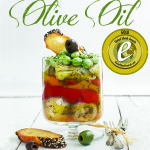
Class Sponsored by
Mediterranean Vegetables in Olive Oil
Fresh Tomato Risotto
Baby Beets and Brussels Sprouts Salad
Turkey Rollatini with White Wine & Porcini Mushroom Pan Sauce
Pumpkin Olive Oil Cake with Vanilla and Fig Balsamic Compote
By Reservation only, call: (866) 654-8396
NOW TAKING RESERVATIONS!
Seal Beach Tasting Room By Reservation only, call: 562-296-5421
Temecula Tasting Room Reservations, call (866) 654-8396
Classes are $45; Pre Paid Reservations only
Feel free to BYOB
Holiday Gifts to Make
|
|
How to Choose and Sharpen Kitchen Knives
One of the most important tasks you can do to get ready for any event or holiday is to make sure that your knives are sharp. It’s so much easier to cut yourself with a dull knife (really), and a sharp knife makes chopping a dream. Sharpen your knives when the time changes, this makes it easier to remember to drop your knives at the cutlery store or with the farmers market knife specialist. There are electric knife sharpeners galore or you can learn the old fashioned way with a whetstone and mineral oil. I should also mention here that a knife ‘steel’ does not sharpen your knife. (The steel is the long piece that comes with the knife block that you don’t really need-the knife block, not the steel.) The steel is designed to hone the edge of your knife between sharpening and should be used prior to any use of the knife. Be sure to wipe the edge of the blade carefully after honing.
Here is an excerpt from my book, ‘What’s In Your Pantry‘ about knives.
Photo: chowhound
Forged construction. A forged knife is one that’s been squeezed in a die (a type of mold) with tons of force. This strengthens the knife by aligning the steel molecules, like wood grain, and also makes the steel’s edge more consistent so it will both take and hold a better edge.
Stamped construction. Provided they’re made from good-quality steel, stamped knives (which have been punched from sheet steel, like how you use a cookie cutter) are a good low-cost alternative to forged knives. But given the easy availability of affordable forged knives, I’d say you should bypass stamped knives altogether.
Full-tang designs. A full tang knife is one in which the blade’s steel extends into the handle for its entire length. The myth is that this is necessary for strength. In the kitchen, a full tang is not necessary, although a full tang can help balance a knife.
Hollow-ground designs. It’s become quite fashionable to have little hollows, known as grantons, ground into the sides of the blade. In theory, they minimize blade-to-food friction and prevent sliced foods from sticking to the blade. I’ve found this is true about 10 percent of the time.
Knives
Chef’s Knife:
This is the most important knife in your arsenal, the one you’ll reach for 95 percent of the time. No matter how tight your budget, get yourself a great chef’s knife. If you need to save money, do it with the other knives.
Santoku
This has become a tremendously popular blade style, and for many cooks the Santoku has supplanted the traditional French chef’s knife as their go-to blade. It’s offset, like a French chef’s knife, but tends to be shorter (less versatile). And many have essentially straight cutting edges, without the smooth curve that helps promote a rocking/paper-cutter motion useful for mincing and chopping.
Paring
The paring knife is going to be your second-most-used blade for fine detail work like trimming meats and vegetables, or peeling and de-seeding fruits.
Bread/Serrated Knife
Serrated blades rip through food, so sharpness isn’t that essential. Quality steel is less important than blade length—longer is better (I like 10 inches, don’t settle for less than 8 inches). Offset blades are preferred—otherwise you have to cut near the edge of the cutting board to stop your knuckles from hitting the surface.
Slicing/Carving Knife
Look for a knife that’s not too tall, so it’ll be easier to make curving slices (handy when circumnavigating a turkey rib cage, or the bone in a roast). And be sure it’s at least 10 inches long, so you can slice through with the fewest number of strokes for a smooth surface and clean presentation.
Boning/Filleting Knife
This is a very special-purpose knife, and in this once instance it’s actually preferable to have a stamped blade. Forged blades are stiffer, and a flexible blade follows bones more closely for better yield. Be sure you choose a knife with a textured grip—boning and filleting is a greasy, messy operation, and you don’t one that knife to slip.
Here’s a little Winter Soup recipe for you to practice your knife skills,
Buy the Book
Pumpkin Blood Orange Olive Oil Cake
I served this last night at The Aquarium of the Pacific’s Sea Fare fund raising event and it was declared by the President of the Aquarium ‘the best food at the event’. Now that was very nice of him but there was some really tasty food there from local restaurants. It was a wonderful event with music, food and wine and lots of grateful fishes. Thanks to everyone who came out and those who stopped by my booth, I’m happy you enjoyed the cake! And you can learn how to make this cake and more at my cooking classes here in Seal Beach at Temecula Olive Oil‘s tasting room, click on Nov. for the upcoming menu!
Pumpkin Olive Oil Cake
Try different flavored olive oils for this cake. Orange, lemon or a lightly flavored olive oil, don’t use a big heavy tasting oil as it will overpower the pumpkin and spice in the cake.
You could make this cake into a sheet cake, round cakes or even cupcakes; just remember to adjust the cooking time.
- 3 cups all-purpose flour
- 2 teaspoons baking soda
- 1 teaspoon ground cinnamon
- 1 teaspoon ground nutmeg
- ½ teaspoon salt
- ¼ teaspoon ground cloves
- 1 1/2 cups sugar
- 1 cup olive oil
- 3 eggs
- 1 can (15 ounces) solid-pack pumpkin (or 2 cups freshly roasted sugar pumpkin)
- 1/4 cup powdered sugar
- 1 package cream cheese, room temperature
- 1 splash of vanilla, optional
Preheat oven to 350°.
In a medium-sized bowl, stir together flour, baking soda, cinnamon, nutmeg, salt and cloves.
Combine sugar and oil in a large bowl with a rubber spatula until blended.
Add eggs, one at a time, beating well after each addition.
Add flour mixture to egg mixture alternately with pumpkin in three batches, beating
well after each addition.
Transfer to a greased Bundt cake pan.
Bake 60-65 minutes or until toothpick inserted near the center comes out clean.
Cool for approximately 10-15 minutes before inverting onto a wire rack.
Remove pan carefully from cake and cool completely.
Easy Cream Cheese Frosting
Combine all ingredients in the bowl of a stand mixer fitted with a paddle attachment, and beat at low speed until sugar is incorporated.
Increase speed to medium high and beat until frosting is light and whipped, about 3 to 4 minutes. Use to top cookies, cupcakes, or cakes
Apple Recipes
Apple, Pomegranate & Gorgonzola Salad
- 1/4 cup white balsamic vinegar
- 1/2 cup Extra Virgin Olive Oil
- salt and pepper to taste
- 1 apple, tart
- 1/4 cup toasted pine nuts
- 2 ounces Gorgonzola cheese
- Pomegranate seeds
- Salad greens
Whisk the vinegar, olive oil and salt and pepper in a small bowl.
Slice the apple into matchsticks.
Crumble the Gorgonzola cheese into small pieces.
Place your salad greens in a large bowl and toss with the seeds, pine nuts, cheese and apples, reserving a few of all the add-ins. Adjust the seasoning to your liking. Drizzle a little of the dressing onto the greens and toss gently. Drizzle just enough dressing onto the salad to lightly coat the leaves - not too much. Add additional salt and pepper if you like and scatter the reserved toppings over the salad.
Applesauce
- 3 pounds apples, Gala, Honeycrisp or Jonagold
- 2/3 cup apple juice, orange juice or water
- 8 tablespoons sugar
- 3 teaspoons cinnamon
- 1/4 teaspoon nutmeg
Core, peel and cut the apples into medium sized pieces. Place all ingredients into a saucepan with lid and simmer over low heat until apples are very tender, about 45 minutes. Put through a food mill to create a soft creamy applesauce or use a potato masher and serve chunky, best served warm.

